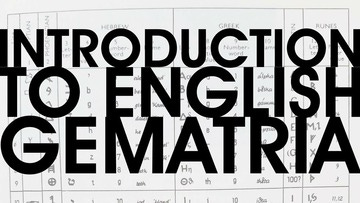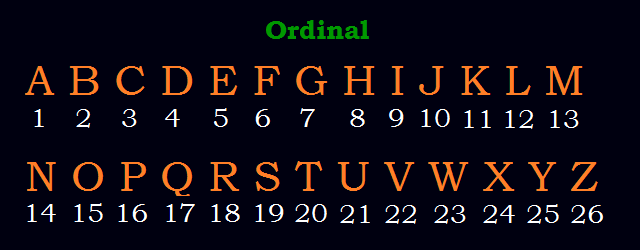Gematria is an ancient practice of assigning numerical values to letters and words, revealing hidden patterns and connections. While it originated in Hebrew and Greek traditions, English gematria has gained popularity as a tool for uncovering symbolic relationships and synchronicities within our language. But how does it work, and why do these patterns seem to emerge with such resonance?
What Is English Gematria?
English gematria involves assigning numerical values to the letters of the English alphabet. The most common systems include:
Simple Gematria: A = 1, B = 2, ..., Z = 26.
English Ordinal Gematria: Letters are numbered sequentially from 1 to 26.
Reverse Ordinal Gematria: A = 26, B = 25, ..., Z = 1.
Sumerian Gematria: Multiples of 6 are used, so A = 6, B = 12, ..., Z = 156.
By converting words into numbers, patterns begin to surface. These numerical patterns often connect seemingly unrelated words and concepts, revealing a hidden network of meaning.
The Resonance of Numbers and Words
In gematria, numbers aren't just quantities—they carry symbolic resonance. Think of them as vibrational frequencies that connect ideas on a deeper level. This resonance emerges because numbers, much like musical notes, vibrate harmoniously when they share mathematical relationships.
For example, the words "Mind" and "Dream" both equal 44 in Simple Gematria. Is this a coincidence, or does the resonance of the number 44 create a symbolic link between them? This vibrational harmony is where gematria transitions from mere numerology to a symbolic language.
How Patterns Emerge Through Resonance
Patterns in English gematria often appear when words share the same numerical value or when values relate through mathematical properties like multiples or factors. These connections can reveal thematic or symbolic links between concepts, historical events, or cultural references.
For instance:
"Hope" (44) and "Wish" (44) share the same value, highlighting a thematic connection between desire and expectation.
The number 33 frequently appears in words associated with mastery and enlightenment, like "Teacher" and "Truth."
These patterns resonate not just because of numerical alignment but because of the cultural and symbolic meanings we've collectively assigned to these numbers.
Why Does Resonance Matter?
Resonance in gematria isn't about predicting the future or uncovering conspiracies. It’s about recognizing the interconnectedness of language, numbers, and meaning. Just as musical notes resonate in harmony, words with shared numerical values vibrate on similar symbolic frequencies.
This resonance may explain why certain words and phrases evoke powerful emotional or spiritual responses. It’s as if the numerical patterns resonate within our subconscious, connecting ideas and symbols in ways we don't consciously realize.
Final Thoughts: A Tool for Discovery
English gematria offers a unique lens through which to explore language, symbolism, and consciousness. By assigning numbers to words, we uncover resonances that might explain why certain ideas feel interconnected. Whether you're drawn to gematria out of curiosity, spiritual exploration, or intellectual pursuit, the patterns you discover can offer profound insights into the hidden architecture of language.
As you continue to explore English gematria, remember: it's not just about the numbers—it's about the resonance they create and the stories they reveal.
If you enjoyed this introduction, consider subscribing to stay updated on future explorations into gematria, symbolism, and the hidden patterns that shape our world.







